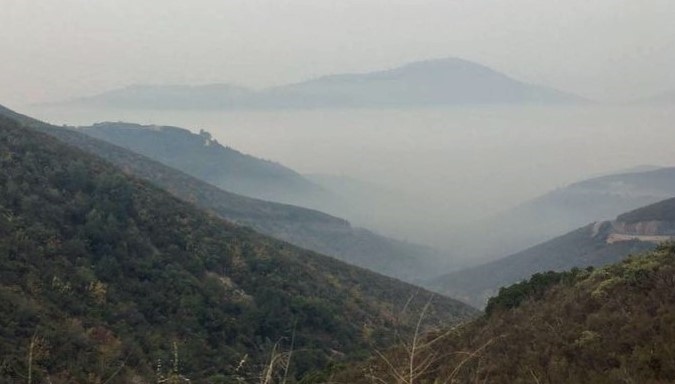
Scientists think wildfire smoke is less harmful to wine grapes the further away they are from the fire. But what about the effects of distant smoke on humans?
A study by Colorado State University researchers recently published in the journal GeoHealth compared the health impacts from nearby and distant fires over two recent summers and found the haze from far-away blazes resulted in more hospitalizations for asthma and increased risk of death from cardiovascular causes.
The scientists suspect there are two reasons for this. First, local fires prompt evacuations and media coverage that inspires people to take precautions, said Sheryl Magzamen, the study’s lead author and an associate professor of environmental and radiological health sciences at CSU.
“There’s a lack of communication about smoke from distant wildfires,” Magzamen said. “Generally when there are local fires, there are advisories in the news that are associated with evacuations and local fire conditions. Due to the presence of the fire, people take measures to protect themselves. This could be why we see this lower risk of health effects from smoke associated with local fires.”
Secondly, the scientists wonder if the chemical changes in lingering smoke somehow make it more harmful. Magzamen said the team is working to better understand these changes.
“In Fort Collins, about half the time we had smoke in late August or September 2020, this was smoke from the Cameron Peak Fire,” which consumed 209,913 acres in the Rocky Mountains, study coauthor Jeff Pierce said. “This smoke was only a couple hours old when it got here. At other times, we were getting smoke from California, and the smoke from the Cameron Peak Fire was either going over our heads or further south.”
Most people wouldn’t notice a difference in the smoke, he said.
“If the smoke is even two days old, things happen chemically, which changes the smoke a lot,” said Pierce, a CSU associate professor of atmospheric science. “If it didn’t smell like wood burning, it was long-range smoke from California.”
While the research continues, the university is working with local governments to get the word out to residents on the different types of smoke, particularly targeting caretakers of young children, homeless people and other unable to shelter safely, officials said.
Colorado’s Front Range is “downwind for pretty much the entire Western United States,” Magzamen said. “It’s critical that we keep people healthy and safe.”
About the Author(s)
You May Also Like






